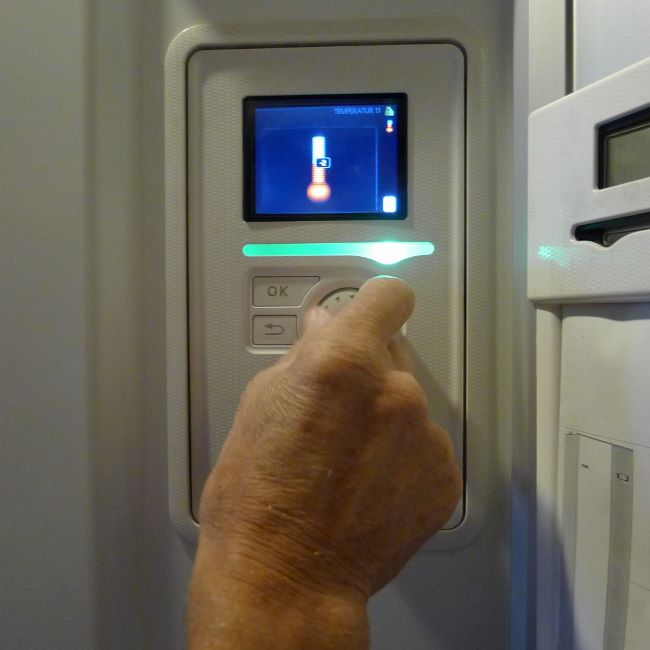In September 2016, the researchers Freja Friis and Toke Haunstrup Christensen from the Danish Building Research Institute (Aalborg University) visited the small Danish island Fur. The island is placed in the Danish fjord Limfjorden and has about 850 inhabitants. Among the main business on Fur are tourists as well as manufacturing based on the extraction of a special kind of clay (diatomite), which is extracted on the island. Also, many inhabitants commutes to the main land for work.
About 30 of the households on Fur have participated in the GreenCOM project, which aimed to utilise the flexibility and intelligence in the low-voltage demand and local supply side infrastructure to create increased regulation capacity and reserve power. One of the partners in the project was the energy supply company and distribution system operator (DSO) EnergiMidt (today Eniig), which is also a partner in the MATCH project. GreenCOM was also affiliated with the Innovation Fur project, which has the vision of demonstrating how modern technology, digitalization and energy-wise solutions can develop the sustainable welfare state of the future.
The households participating in the GreenCOM project had various combinations of smart grid technologies installed such as photovoltaics (rooftop solar panels), heat pumps, a home monitoring and control (HMC) system and batteries for local storage of excess solar power. Especially the installation of home batteries and the combinations of different technologies were among the novelties of the GreenCOM project.
During their stay on Fur, Freja Friis and Toke Haunstrup Christensen made interviews with nine households with solar power (PV panels) installations in combination with heat pumps, batteries and/or HMC. The interviews, which lasted about one hour each, were recorded for later analysis.

An interviewee operating the settings of his heat pump control.
Among the first impressions from the interviews were that some households did get quite heavily involved in time shifting their daily electricity consumption in order “sync” their electricity consumption with the power production from the solar panels. For instance, some postponed dishwashing and clothes washing from the evening hours to the daytime hours. However, most of the households did not actively time shift their electricity consumption through changing routines.
Also interestingly, it appears that the installation of batteries might have the consequence that people are less likely to be actively engaged in time shifting their daily habits in order to balance the electricity consumption and production of their home. It seems as they “re-delegate” the task of time shifting to the batteries, which store excess electricity from the solar panels for later use when the electricity production of the solar panels is lower than the electricity consumption of the household.
The interviews from Fur will now be analysed and compared with experiences from the other MATCH cases in order to get into the details and draw more general conclusions.
/ Toke Haunstrup Christensen (Danish Building Research Institute)
